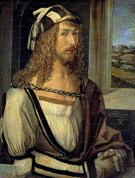Art, Art History and Design, School of
Date of this Version
2002
Abstract
During the sixteenth century, representations of taverns and inns increased in both prominence and number within the visual art of northern Europe. From Hieronymus Bosch to Pieter Bruegel, painters and designers of prints made images employing taverns and inns as the setting for religious and secular subjects. Bosch’s panel painting of a traveling merchant, variously titled the Wayfarer, Peddler, and the Prodigal Son, from ca. 1510), includes one of the earliest renderings of the tavern or inn in European art. Traditional interpretations of the work’s subject as the Prodigal Son underscore the religious and moralizing meanings both painting and inn have held within the discipline of art history.
The Prodigal Son “wasting his substance in riotous living” (Luke 15:13) undoubtedly offered fuel for visual thought in such imagery. In Bosch’s painting. the man with tattered clothing, bandaged leg, and basket on back walks to the right while looking back over his shoulder toward the inn, with what may be longing, even regret. Bosch’s inn stands in a partial state of disrepair. The roof and windows are riddled with holes and one window shutter hangs precariously from a hinge.
Art historians have interpreted Bosch’s inn as an emblem of moral degeneration based on its physical decay, yet the fabric of the building appears intact. In the doorway of the inn the man fondling the breast of the woman and the man urinating around the comer support the moralizing interpretation. In addition, the pigs eating from the trough in front of the doorway appear to identify the man at the center of Bosch’s painting as the Prodigal Son—seen, for example, in Albrecht Dürer’s engraving of the subject from ca. 1496. Art historians have, in sum, viewed the tavern—and its more ambitious counterpart, the inn—within sixteenth-century Northern art as a locus of negative behavior whose representation elicited a moralizing interpretation from the viewer.
This essay expands this traditional moralizing and negative approach to public houses by investigating images of taverns designed by Sebald Beham, a pupil of Dürer in Germany. Published in Beham’s home town of Nuremberg between 1528 and 1535 as woodcut prints, the works have as their subject kermis (Kirchweih), which was centered around a tavern or inn in the sixteenth century. Kermis was the most popular peasant festival during the late Middle Ages and Reformation period, and it celebrated the anniversary of either a church’s consecration or saint’s day. In Beham’s kermis images, the exterior of a tavern provides the setting for celebrating by peasants and a few members of other social classes. In this essay, Beham’s Large Kermis woodcut (Figure 2), the physically largest and most complex example of the theme, will be explored for the variety of meanings and associations the tavern held in sixteenth-century Germany and that reach beyond art history’s traditional moralizing approach. I argue that art historians need to consider a wider range of sources and associations when considering the tavern, including those relating to eating and drinking, social gatherings, and peasant festivals. Only then will tavern and kermis be viewed neutrally if not joyously.


Comments
Published in The World of the Tavern: Public Houses in Early Modern Europe, pp. 95-115. Copyright © 2002 Beat Kümin and B. Ann Tlusty.